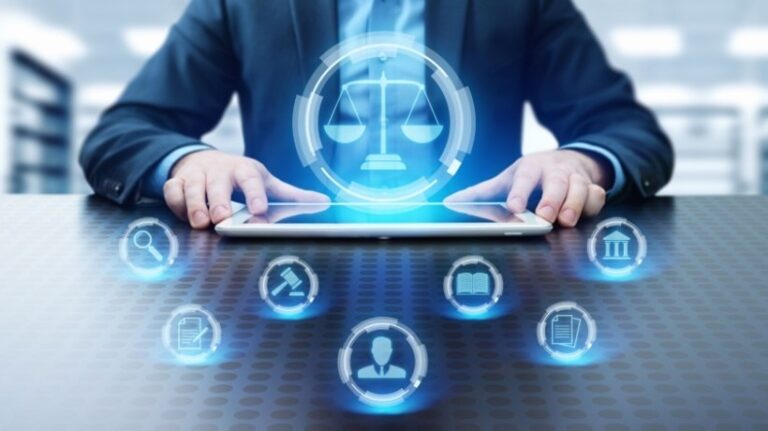
Why fair use should be the norm in eLearning
Imagine building the perfect online course with impressive videos and slides. Are you sure you can use all your content without getting sued? Copyright is a legal aspect of creation that prohibits you from using someone else’s creation. Protect everything from books and videos to music and stock photos. In e-learning, you will inevitably come across materials that you did not create yourself. The key is knowing when you can use it without getting into legal trouble. This is where fair use in e-learning comes into play.
Fair use is a copyright law that makes educators’ jobs easier. Simply put, fair use allows you to borrow material that you didn’t create, as long as you don’t claim it as your own. In other words, you may use copyrighted material within legal limits. This does not mean that you can copy and paste anything for educational purposes. Here’s what you need to know to use fair use wisely in e-learning, and best practices to protect yourself from copyright infringement.
Understanding fair use in e-learning
Elements of fair use
Fair use, on the other hand, means that you can use copyrighted learning content for educational purposes as long as you credit the creator. On the other hand, you cannot do it freely. Balance is key and there are four factors to consider. First, there is the purpose and character of use. Are you teaching using those materials? If so, it’s usually perfectly acceptable. However, if you want to add it to a paid online course, no. The second factor is the nature of the work. Facts and general knowledge are safe to use, but be careful when borrowing from novels, for example. Creative works are given special protection. Then there’s the amount of work you borrow. You can use snippets, but not the whole thing. Finally, there is the impact on the market. If your use of the content could replace or diminish the value of the original owner’s product, you may face legal issues.
Consequences of crossing the line
What happens if you abuse fair use? Let’s just say it’s pretty expensive. We’re talking about fines, legal battles, and potential damage to your reputation. For example, how would students feel if their course was banned and removed due to copyright infringement? Over-reliance on fair use in e-learning is also dangerous. You can’t use it for any content you don’t want to license. Additionally, creators are entitled to praise and compensation for their work, just as you are entitled to your work. Therefore, you should understand the rules and practice fair use wisely because no one wants legal trouble. Let’s take a look at what you can do to avoid copyright infringement when it comes to learning content.
Best practices to avoid copyright infringement
ask for permission
To avoid legal trouble, always ask for permission if you have any doubts about whether you are allowed to use content. So when you find a video clip, image, or text that you want to add to your course, ask yourself, “Do I have the right to use this?” If you are unsure, please contact the copyright holder. You don’t want to risk your content being removed. And if you think people won’t notice if you freely use your work, know that most people should keep it. And you have to respect that.
Use royalty-free content
There are safer options than borrowing someone else’s copyrighted work and adding it to your course. Of course, in the unlikely event that the creator does not allow you to use their content after asking for permission, you can choose public domain and royalty-free content. Public domain works typically refer to government publications and works for which copyright has expired, such as those by classic authors. Royalty-free content includes stock photos, videos, music, and more. However, some royalty-free items may still require attribution or have restrictions on commercial use, so you may not be able to use them for content you want to monetize.
quotation
If you are an eLearning author, citing sources is a must. Proper citation and attribution isn’t just for avoiding lawsuits. It’s about respect. If someone has spent hours creating an infographic, writing a blog, or filming a video, the least you can do is praise them. Proper citation requires mentioning the author, source, and terms of use of the work. For example, if you’re using an image under a Creative Commons license, include the artist’s name, the website you downloaded it from, and the license type. Please note that you must provide citations for anything that includes the work of others, such as your own slides, video descriptions, and course materials.
follow guidelines
Fair use does not mean that you are free to use any kind of content. For example, you can’t introduce an entire book or movie in a course just because it’s educational. Fair use is like a permission, so use it for a small part of someone else’s work. However, the most important thing is that you need to change the content a little. You can add comments to it, analyze it, use it for lessons, but in any case be sure to give it a new purpose.
Creating original content
Overall, the safest option to differentiate yourself while avoiding copyright infringement and legal issues is to create your own content. Creating your own graphics, videos, and lesson materials may seem like a lot of work, but it’s worth it. why? Because only you can use your content, you can avoid copyright issues and earn more money. You can also use free tools and AI if you are not skilled in design.
conclusion
When it comes to fair use in e-learning, the lines between what is and isn’t allowed can get blurry. The more you know about how to ethically incorporate other people’s material, the less likely you are to run into legal problems. However, the goal is not just to avoid trouble. This is to ensure that the content you create contributes positively to the world of e-learning, while respecting the efforts of others. So make e-learning a better place for everyone and always remember to practice fair use.


